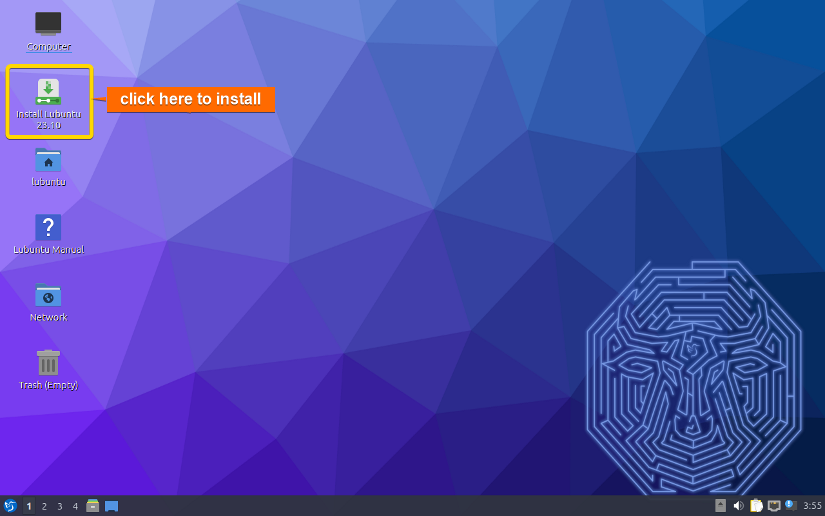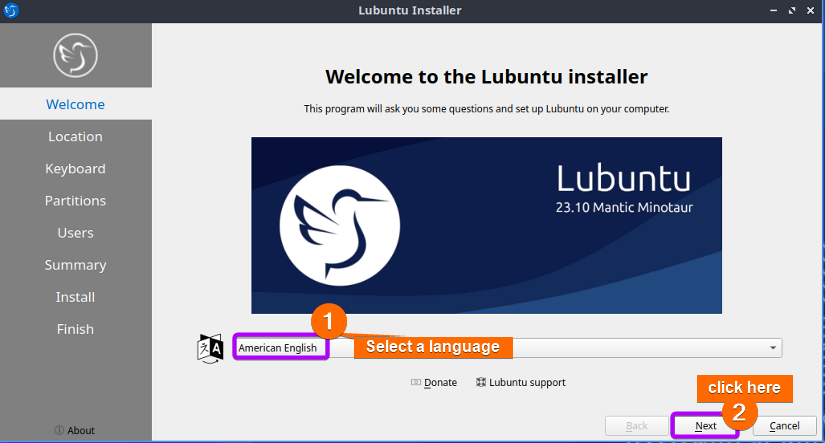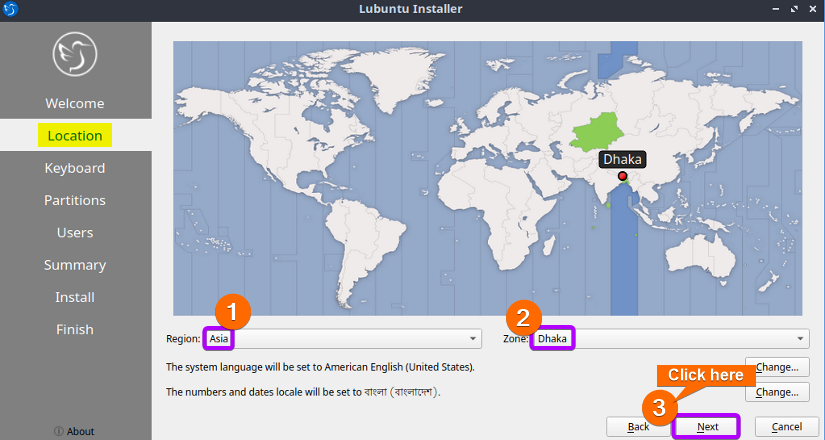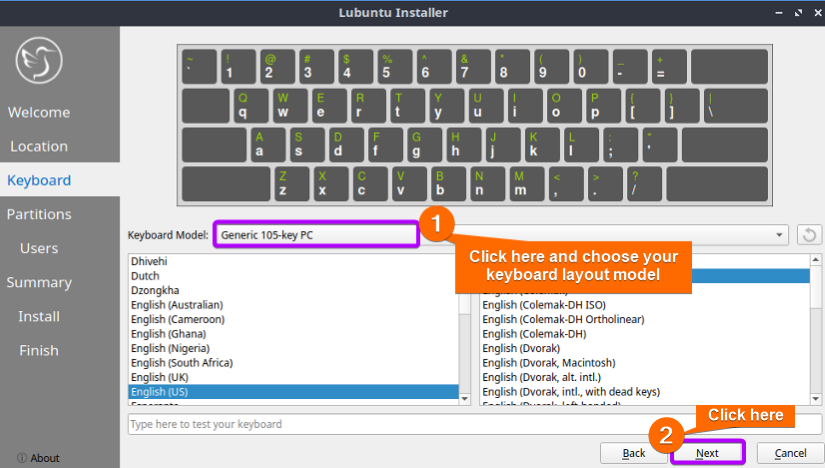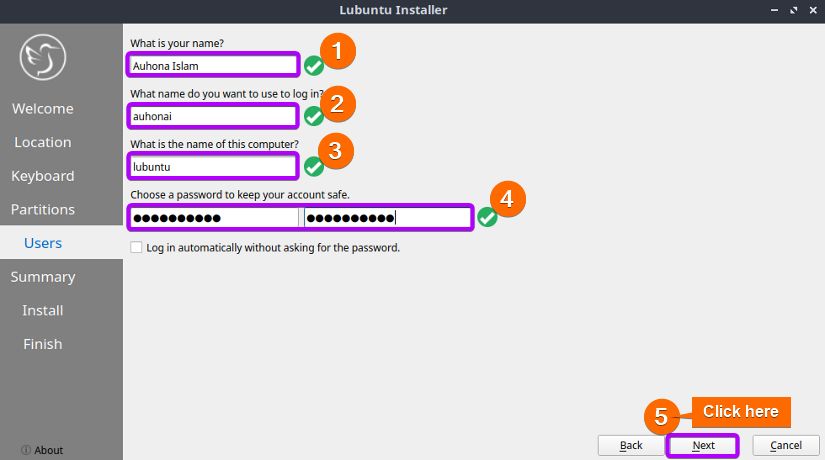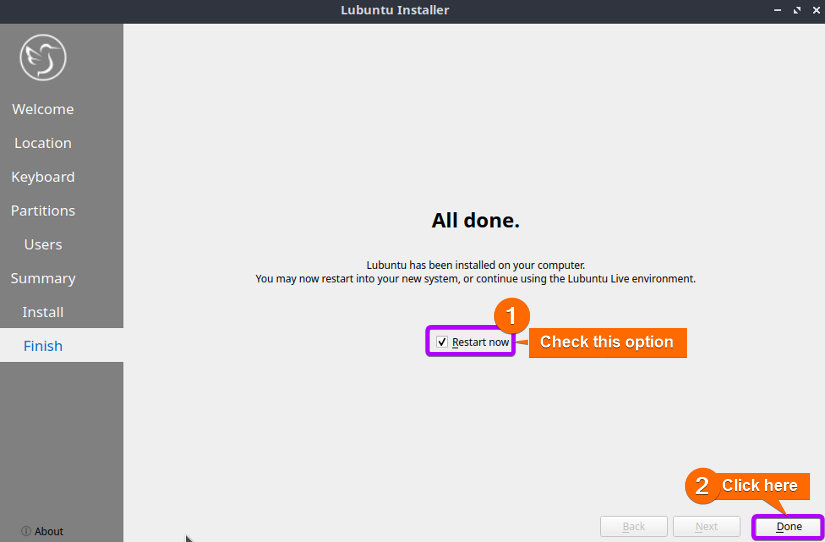FUNDAMENTALS A Complete Guide for Beginners

Lubuntu is a lightweight Linux distribution based on Ubuntu, designed for users seeking a fast and efficient computing experience, especially on older or resource-constrained hardware. It features the LXQt desktop environment, known for its minimal resource usage while providing a user-friendly interface. Lubuntu boasts a streamlined set of default applications, ensuring a responsive system without compromising functionality. With a focus on simplicity, Lubuntu offers a customizable desktop environment, reliable security updates, and access to the extensive Ubuntu software repository.
If you prefer to install Lubuntu, this guide will assist you with the step-by-step procedure.
Requirements to Install Lubuntu
- RAM: Minimum 1 GB ( 2 GB recommended).
- Disk space: Minimum 10 GB.
- USB drive: Minimum 2 GB.
Steps to Install Lubuntu
Before installing Lubuntu, don’t forget to back up your data. Because installing a new OS may harm your important data.
To install Lubuntu follow the steps below:
Step 1: Download the Lubuntu ISO File
Go to Lubunut’s official website to download the ISO file.
Step 2: Create a Bootable Media
To create a bootable USB drive from the ISO file, you can utilize Etcher, an open-source application.
- Initiate by installing Etcher on either Windows or MacOS. After installation, launch the application and Choose the “Flash from File” option.
- Next, pick the ISO file from the location where you downloaded it.
- After that, connect your USB pen drive to the computer and click on “Select target”.
- Select your USB drive from the list.
- Finally, click on Flash to start the ISO file on the USB drive.
Following that, Etcher will proceed to transfer the contents of the ISO file to your USB drive, thereby making it bootable.
Step 3: Boot Lubuntu from USB
To boot Lubuntu from USB, follow the steps below:
- To begin, insert the USB drive with the bootable setup into the computer. Afterward, power on or restart the computer, and the boot window will appear automatically. Use the RIGHT ARROW key to navigate to the boot options.
- Keep the cursor on Removable devices using the DOWN ARROW key. Now, use the + key to move the “Removable Devices” option to the top.
- Navigate to Exit by using the RIGHT ARROW (or you can press ESC).
- Keep the cursor on the Exit Saving Changes option. Then, press ENTER.
- Select Yes and press ENTER.
- After booting, the install window will appear on the screen. Here, select “Try or Install lubuntu”.
After booting, you’ll see a Lubuntu desktop environment.
- Now, click on “Install Lubuntu 23.10”.
Step 4: Choose a Language
Select your preferred language and click on Next.
Step 5: Specify Your Location
To specify your location, choose your Region and Timezone. Then, click on Next.
Step 6: Select Keyboard Layout
Choose your keyboard Model. Then, click on Next.
Step 7: Configure Partitions
Check the box “Erase disk” in partition settings and click on Next. 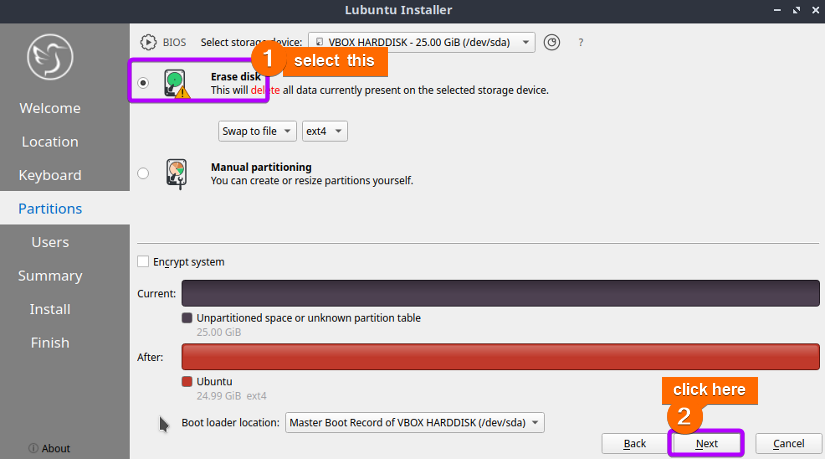
Step 8: Setup User Credentials
To provide your identity, first write your name, pick a username, choose a password, and set your computer’s name. Afterward, check the “Require my password to log in” option and click on Next.
Step 9: Start Installation
Here, you can see the overview of the configuration that you’ve done. Now, click on Install. 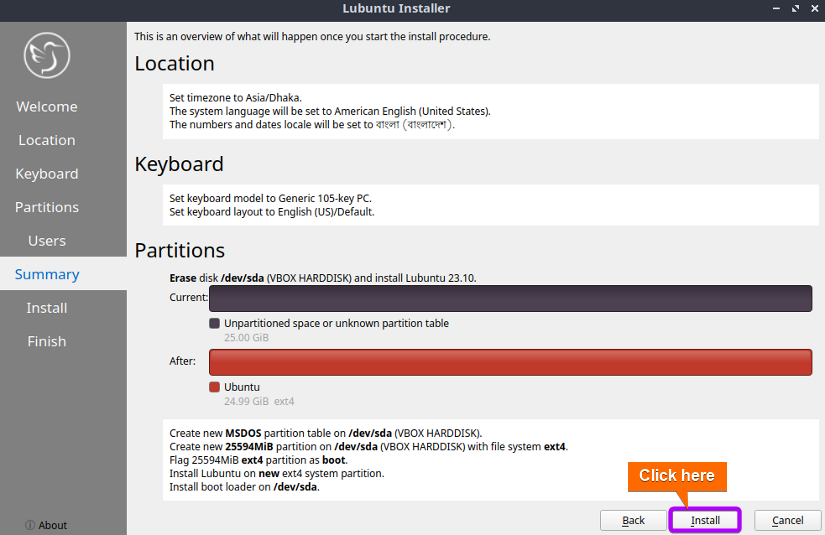
Step 10: Restart the OS
After finishing the installation, check the Restart Now option to save the configuration you’ve made. Then, click on Done.
Step 11: Login to the OS
After restarting the OS, enter the password previously created for the user account and press ENTER. 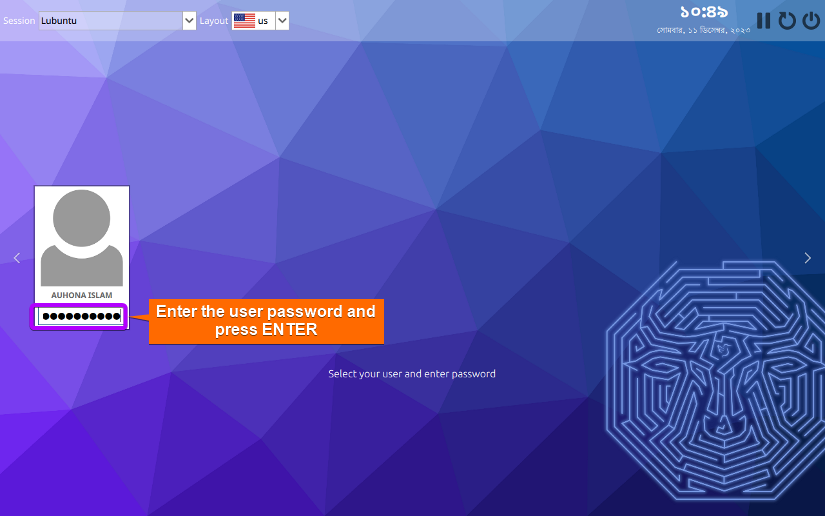
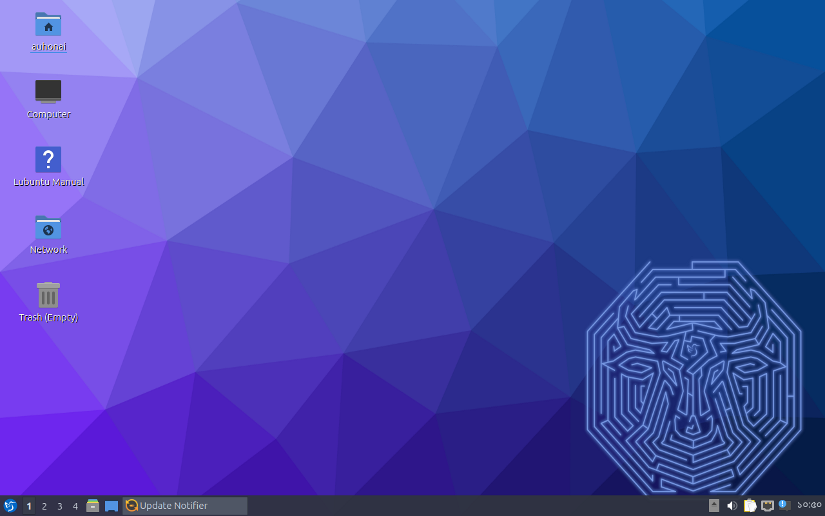
Conclusion
In conclusion, installing Lubuntu opens the door to a lightweight and efficient computing experience, particularly suitable for older or less powerful hardware. With its minimal system requirements and streamlined interface, Lubuntu provides a responsive environment, making it an excellent choice for users seeking a light Linux distribution. Whether you’ve chosen Lubuntu for its performance on older hardware or its minimalist design, you’re now equipped to harness the benefits of this lightweight Linux distribution.
People Also Ask
What are the features of Lubuntu?
The features of Lubuntu are:
- LXQt Desktop Environment: The LXQt desktop is used by Lubuntu, offering a quick and snappy UI.
- Resource Efficiency: As Lubuntu is lightweight and uses fewer system resources, it’s a great option for older or low-end systems.
- Ubuntu Base: As an official Ubuntu flavor, Lubuntu inherits the stability, security, and extensive package repository of Ubuntu.
- Customizable Desktop: Users can easily customize the desktop environment and appearance to suit their preferences.
- Developer Tools: Lubuntu supports a variety of programming languages and development tools.
Is Lubuntu as secure as Ubuntu?
Yes, as Lubuntu is an official flavor of Ubuntu that utilizes the LXQt desktop environment. It’s designed to be lightweight and fast, making it suitable for older or less powerful hardware. From a security standpoint, Lubuntu inherits the robust security features of Ubuntu, including regular security updates, strong package management, and the overall security infrastructure provided by the Ubuntu project.
Does Lubuntu have a firewall?
Yes, Lubuntu, like Ubuntu includes the Uncomplicated Firewall (UFW) by default. UFW is a user-friendly interface for managing iptables, the default firewall management tool for Linux. Users can easily configure UFW on Lubuntu to control incoming and outgoing traffic, enhance system security, and protect against unauthorized access.
What is the disadvantage of Lubuntu?
While Lubuntu is a lightweight and efficient distribution with many advantages, it’s important to know its limitations and potential disadvantages. Here are some drawbacks:
- Limited Software Repositories
- Less Polished User Interface
- Limited Default Application
- Learning Curve for New Users
Can Lubuntu be used for programming?
Yes, Lubuntu can be used for programming. It provides a lightweight environment that is well-suited for coding in various programming languages. Lubuntu supports a wide range of development tools, compilers, and editors. Users can install and use popular programming languages like Python, Java, C++, and others. The lightweight nature of Lubuntu makes it particularly suitable for programming on older or less powerful hardware where resource usage efficiency is essential. Overall, Lubuntu offers a capable environment for developers to write, compile, and run code.
Can I install Lubuntu on a computer with UEFI firmware?
Yes, Lubuntu supports installation on systems with UEFI firmware. Ensure that your boot settings are configured appropriately in the BIOS or UEFI settings.
Related Articles
- How to Install Debian 12 (Bookworm) [A Complete Guide]
- How to Install Kali Linux [Step by Step]
- How to Install Ubuntu [Step by Step]
- How to Install Ubuntu Server?
- How to Install Kubuntu [A Step-by-Step Guide]
- How to Download & Install Xubuntu [Easiest Guide]
- How to Install Linux Mint 21.2 Victoria [Easy Guide]
- How to Install Zorin OS 16 [Easiest Guide]
- How to Install Red Hat Enterprise Linux [Simple Guide]
- How to Install Fedora [A Step-by-Step Tutorial]
- How to Install CentOS 9 [Easiest Guide]
<< Go Back to Linux OS Single Installation | Linux OS Installation Guide | Learn Linux Basics
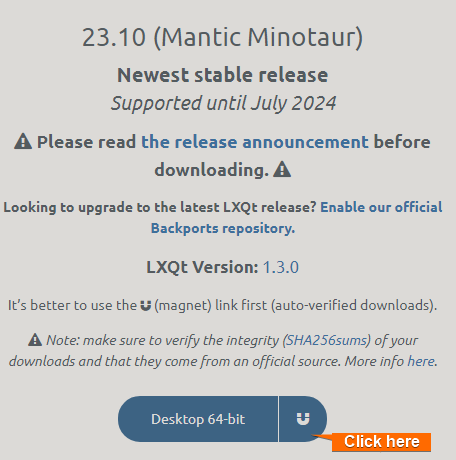



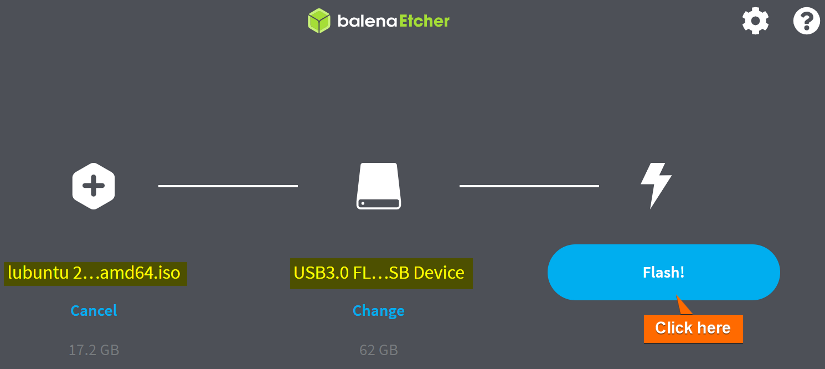
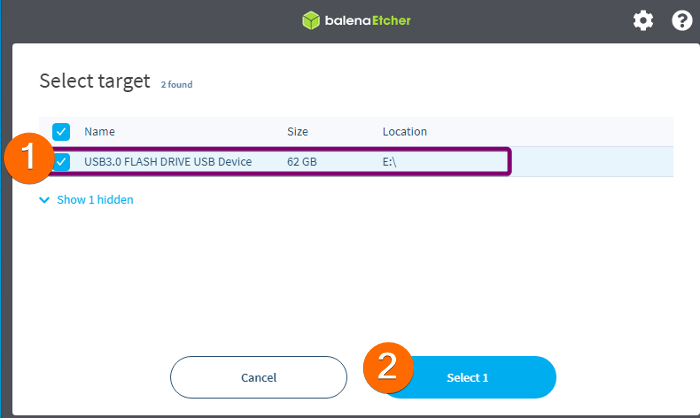
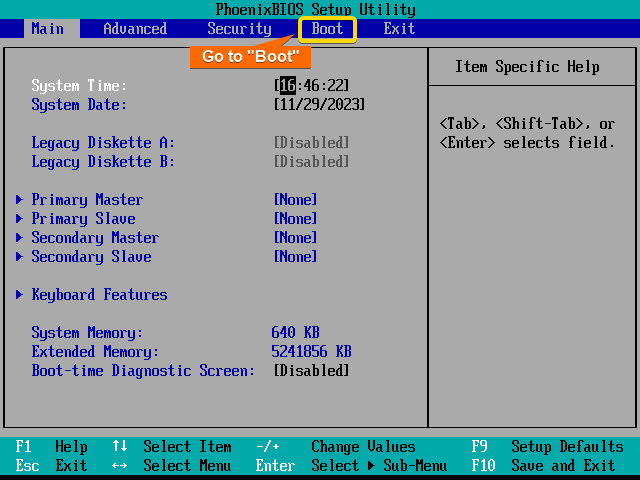
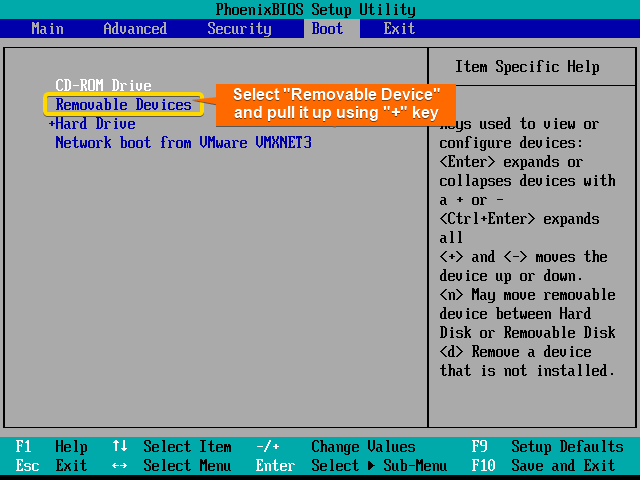
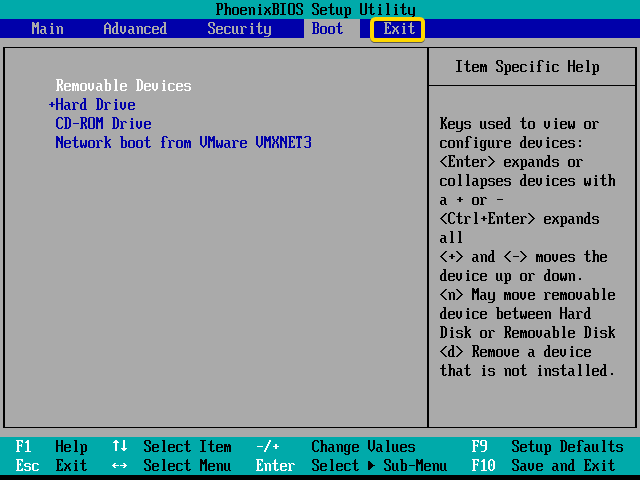
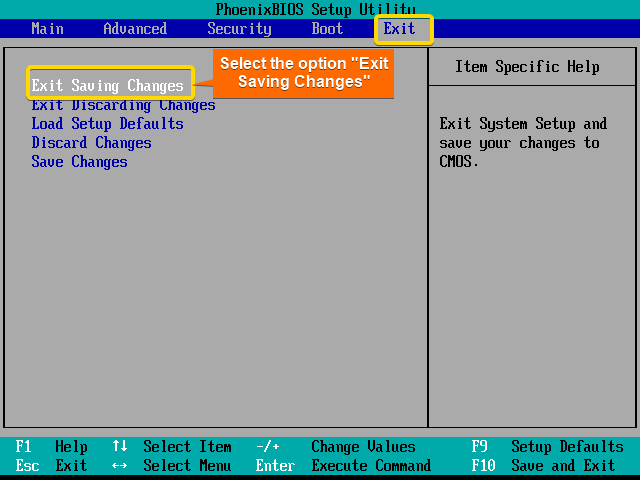
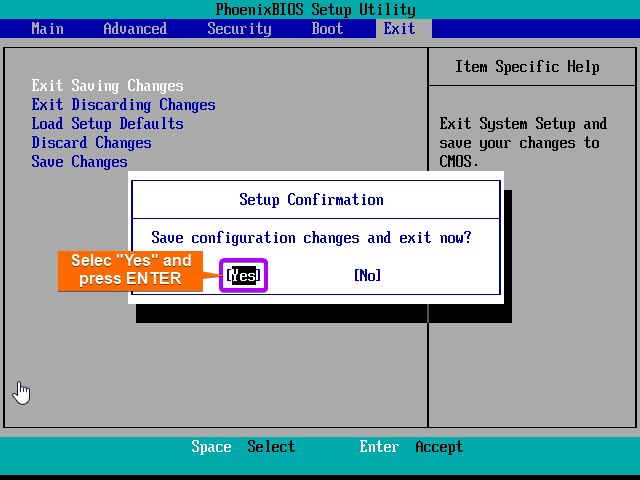
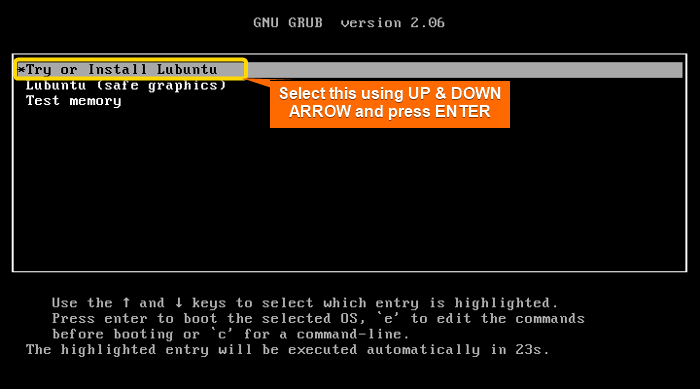 After booting, you’ll see a Lubuntu desktop environment.
After booting, you’ll see a Lubuntu desktop environment.